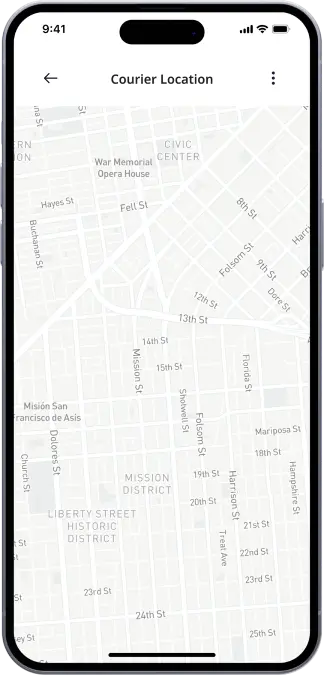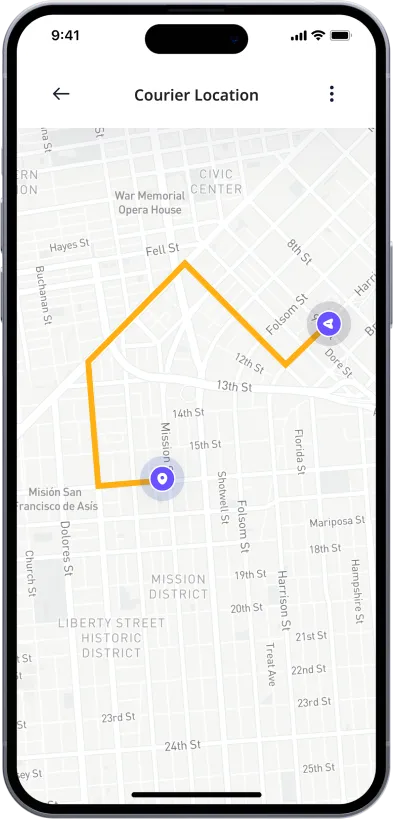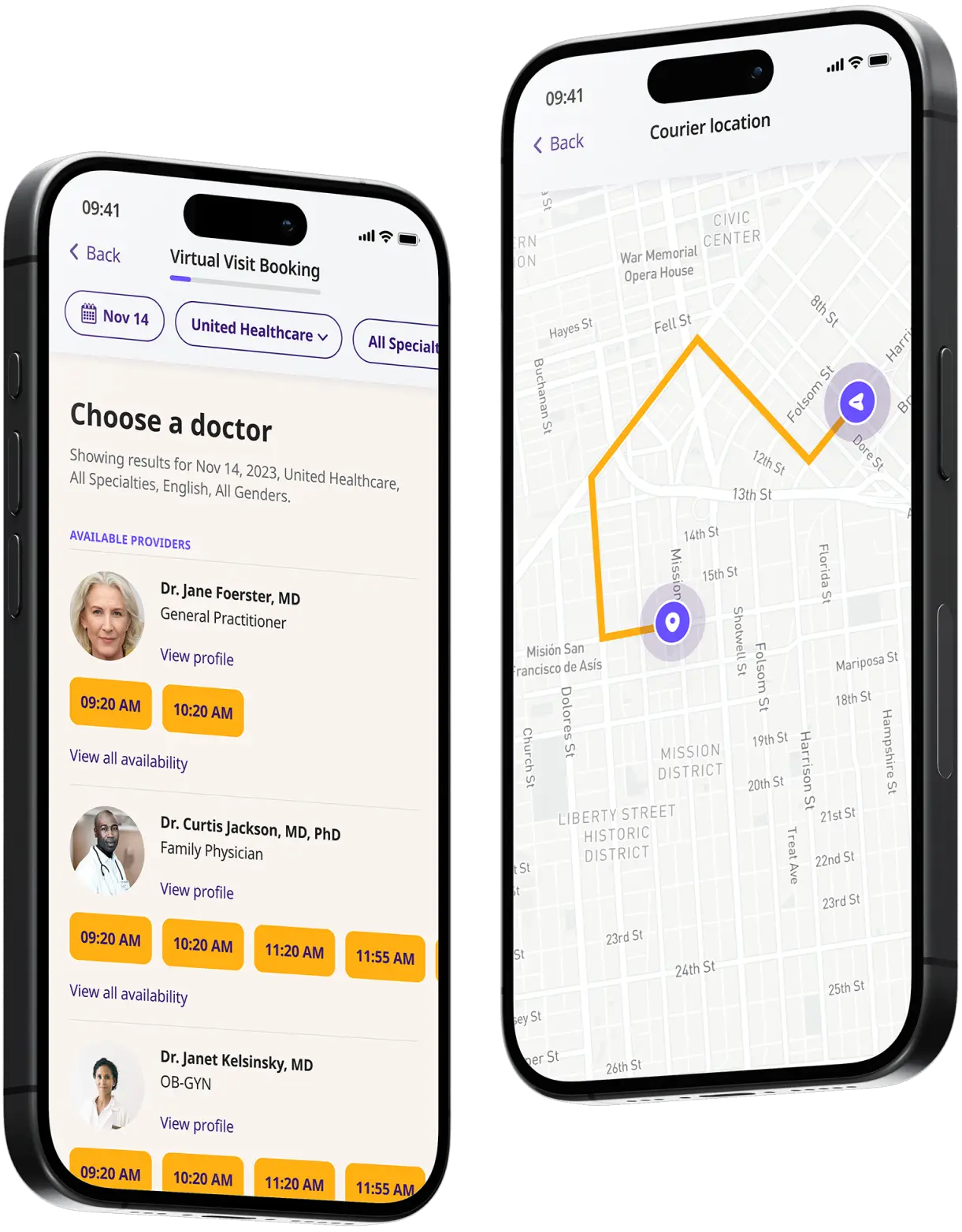Get an Azithromycin Prescription Online (Zithromax)
Get a prescription for azithromycin (Zithromax) online to treat bacterial infections. Doctors available 24/7 in all 50 states.


Available in 50 states. Insurance accepted.
Fast
virtual visits
24/7 care
assistants
Prescriptions
as needed



See If Delivery Is Available Near You
Delivery Not Available
Enter your ZIP code to check if prescription delivery is available in your area and how soon your meds could arrive.
How to get started
Choose your doctor, start a virtual visit, and have your prescriptions sent to your preferred pharmacy for pickup — all in just a few easy steps.
Choose a doctor
Choose a physician by availability, specialty, ratings, and more.

Start a video call
Get connected with a doctor anytime, anywhere.

1-Hour Rx Delivery
Your prescription delivered to your door in 1 hour or less.

Available in 50 states. Insurance accepted.
One-Time
Physician Visit
One-time visit with a physician for diagnosis, treatment, Rx, labs, referrals, and doctor’s notes.
Accepted Insurances
See why people turn to DrHouse...
As seen in

Azithromycin (Generic Zithromax, Z-Pak)
Azithromycin is an antibiotic medication that is mainly used in the treatment of bacterial infections. It can be used to treat a number of infections as diverse as ear, nose, and throat infections, chest infections, skin infections, sexually transmitted infections (STIs), and can also be used in the treatment of Lyme Disease. It can also be used as a long-term preventive treatment for people who keep getting recurring chest infections.
Azithromycin is part of a group of medicines known as macrolide antibiotics, which are commonly used to treat acute and chronic infections, alongside Clarithromycin, Erythromycin, and Roxithromycin, Azithromycin is one of the most commonly prescribed antibiotics.
Azithromycin is sold and marketed under generic brand names such as Zithromax, Zmax, Z-Pak and Sumamed.
What Is Azithromycin Prescribed For?
Azithromycin is prescribed for certain bacterial infections, such as pneumonia, bronchitis, and infections of the ears, sinuses, lungs, and skin. It can also be used to treat or prevent Mycobacterium Avium Complex (MAC) infections, which is a type of lung infection that affects people with HIV. It is commonly prescribed for bacterial infections, however, it will not work for common viral infections such as colds or flu.
Using antibiotics like Azithromycin when it is not needed can increase the risk of getting an infection later that will resist antibiotic treatment.
How Does Azithromycin Work?
Azithromycin works by stopping the growth of infectious bacteria in the body, therefore preventing its spread. It can be used to treat infections caused by susceptible bacteria, and Azithromycin works by binding to the 23S rRNA of the 50S ribosomal subunit of susceptible bacteria such as Mycobacterium avium, M. intracellulare, and Chlamydia trachomatis. By binding to the infection, it inhibits the bacterial protein synthesis and kills the bacteria, stopping its spread.
What Are the Side Effects of Azithromycin?
Azithromycin is an antibiotic that may result in a number of side effects. Like all medicines, Azithromycin can cause side effects, although not everyone will get them. People may experience an allergic reaction to Azithromycin, such as difficulty breathing, swelling in the throat or face, and hives, or a skin reaction such as burning eyes, rashes, and fevers. It’s important to seek emergency medical help if any of these occur.
Additionally, there are more common side effects of Azithromycin, such as stomach pain, diarrhea that is bloody or watery, fast heartbeats, nausea, losing your appetite, feeling dizzy, fatigue, headaches, changes to your sense of taste, vomiting, liver problems. dark urine, and jaundice.
Older adults are more likely to have side effects related to the rhythm of their heart, such as a fast heart rate, which can be life-threatening. If a baby is prescribed Azithromycin, they may become more irritable or vomit while eating or nursing.
Frequently Asked Questions About Azithromycin
What to Avoid While Taking Azithromycin?
While taking Azithromycin you should avoid the following:
- Alcohol – Alcohol can interact with Azithromycin and may increase the risk of side effects.
- Extended sun exposure – Antibiotics can make your skin more sensitive to sunlight, so you should limit extended sun exposure when taking Azithromycin.
The list above is not exhaustive, and there may be other things you should avoid.
Common medications that interact with Azithromycin include:
- Warfarin
- Antacids containing aluminum or magnesium:
- Quinidine
- Amiodarone
- Certain antipsychotics (like pimozide)
- Colchicine
- Cyclosporin
- Digoxin
- Nelfinavir
- Statins (like atorvastatin)
- Alfentanil
- Triazolam
The listed medications are not exhaustive, and you should always consult your doctor or pharmacist before taking any new medication while on Azithromycin. You should also inform them if you are taking any herbal supplements, as they can interact with Azithromycin too.
What Is the Most Common Side Effect of Azithromycin?
The most common side effect of Azithromycin is an upset stomach. This can include nausea, vomiting, abdominal pain, or diarrhea.
Other common side effects may include:
- Headache
- Loss of appetite
- Fatigue
- Dizziness
If you experience any serious side effects such as shortness of breath, fever, joint pain, yellowing of the skin or eyes, dark urine, confusion, easy bruising, or bleeding, contact your doctor immediately.
It is also important to let your doctor know if you experience any side effects at all when taking Azithromycin, as they may need to adjust the dosage or use a different medication.
How Long Is Azithromycin Usually Prescribed For?
Depending on the infection being treated, the usual dose is 500mg a day for a period of between 3 and 10 days. For some infections, patients may be prescribed a one-off higher dose of either 1g or 2g. If the medication is being prescribed for children or individuals with kidney problems, the dose may be lower.
How to Take Azithromycin?
You should take Azithromycin based on the doctor’s instructions. Azithromycin is either prescribed via an oral suspension liquid or in the form of a capsule and it is usually recommended that you take your medicine at the same time every day. Typically, Azithromycin is only taken by the patient only once per day.
Can You Get Azithromycin Over-The-Counter (OTC)?
Azithromycin is not available as an over-the-counter medication in the United States. It is a prescription drug, which means that only a doctor can prescribe it for you.
Can You Get an Azithromycin Prescription Online?
Yes, our licensed physicians at DrHouse can provide an online prescription for Azithromycin. After reviewing your medical history and current condition, our physicians will determine if Azithromycin is the appropriate treatment for you. If so, they can write a prescription and send it to the pharmacy of your choice.
For more detailed information about azithromycin, you can refer to the following sources:
- Zithromax prescription label, Food and Drug Administration (FDA).
- Zithromax (azithromycin) prescription label, Pfizer.
- Zithromax, Drugs.com.
- Azithromycin, MedlinePlus.
The content on this page has been medically reviewed for accuracy and comprehensiveness by Amy Dougherty, FNP-BC, AGAC
Related services
Explore more of our services tailored to your needs and discover additional ways we can support your healthcare needs.
Frequently asked questions



